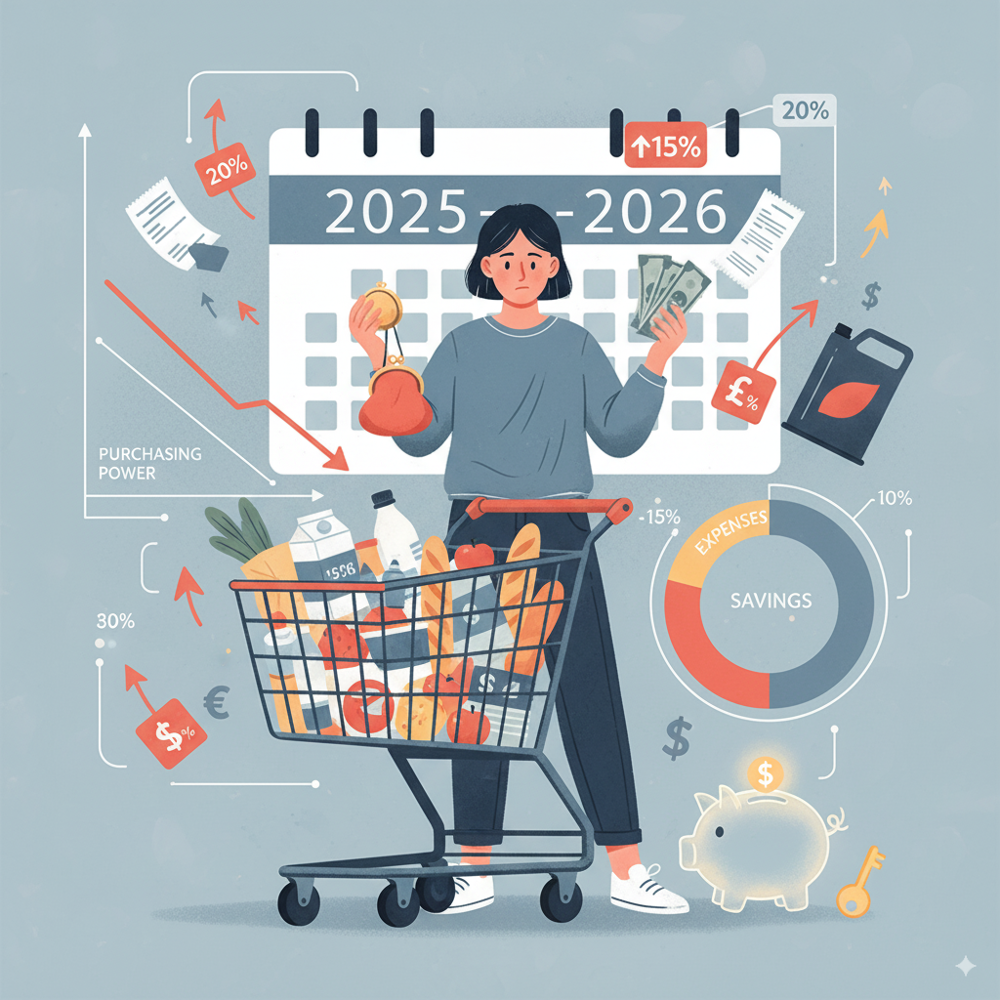How to Adapt Your Personal Budget to High Inflation and Rising Prices in 2025–2026

Personal Finance, Inflation Management, Budget Planning
Rising inflation in 2025–2026 puts pressure on household budgets worldwide. Learn how to adapt your spending, savings, and investment strategy to maintain financial stability in times of higher costs.
Inflation is one of those financial forces that touches every household, regardless of income level or geography. In 2025–2026, many economies are still experiencing elevated price growth. Food, housing, energy, and healthcare costs are rising faster than wages in some regions, creating a real challenge for families.
But high inflation does not necessarily mean losing control over your finances. It requires adjusting habits, making smarter choices, and learning how to protect the purchasing power of your money. Below, I outline a framework and practical strategies for individuals and families who want to maintain financial stability in a high-inflation environment.
Step 1. Understand How Inflation Affects Your Budget
Inflation reduces the real value of money. If your income remains the same but prices rise by 7%, you can buy 7% less with the same paycheck. The first step in adapting is identifying which categories of your budget are most vulnerable.
- Food and groceries: Usually among the first categories to reflect inflation.
- Housing and utilities: Rent, mortgage rates, electricity, and heating costs tend to increase.
- Transportation: Fuel and car insurance often rise with global energy prices.
- Healthcare and education: Costs grow steadily, often faster than official inflation.
Mapping these areas gives you clarity about where to focus savings or where to prepare for unavoidable increases.
Step 2. Prioritize Essential Spending
High inflation periods call for sharper prioritization. Essentials such as housing, food, and healthcare should take priority over discretionary categories like entertainment, luxury goods, or frequent travel. This does not mean eliminating all enjoyment, but it does mean aligning spending with survival and long-term security first.
A practical method is the 50/30/20 rule, adapted for inflationary times:
- 60% needs (slightly increased share, since essentials cost more).
- 20% wants.
- 20% savings and debt repayment.
By increasing the portion allocated to “needs,” you account for rising costs while still keeping space for savings.
Step 3. Protect Your Savings Against Inflation
Money left in a standard low-interest savings account may lose value quickly when inflation is high. Consider diversifying where you keep your emergency fund and long-term savings:
- High-yield savings accounts or term deposits: Even if interest lags inflation, higher rates cushion the impact.
- Government inflation-linked bonds: Instruments that adjust payouts to match inflation indexes.
- Stable investment funds (dividend-paying stocks, ETFs, real estate): These can provide growth or income that offsets price increases.
Remember: the emergency fund (3–6 months of expenses) should remain in liquid, safe accounts despite lower returns, while long-term savings can be placed in instruments with higher yield potential.
Step 4. Re-evaluate Debt
Inflation has a two-sided effect on debt. On one hand, if you already have a fixed-rate mortgage or loan, the real burden of repayment may shrink as wages eventually catch up with inflation. On the other hand, variable-rate loans or credit card balances can become dramatically more expensive as interest rates rise to fight inflation.
Action plan:
- Pay down high-interest debt first.
- Consider refinancing if better fixed rates are available.
- Limit new borrowing unless it serves long-term value (e.g., education, property).
Step 5. Strengthen Income Sources
Inflation is easier to fight if your income rises alongside or above prices. Explore opportunities such as:
- Asking for a raise, especially if your skills are in demand.
- Developing side hustles or freelance income streams.
- Upskilling or reskilling in industries resilient to inflation (healthcare, digital services, energy).
- Even modest additional income provides a buffer against higher daily expenses.
Step 6. Smart Consumption and Lifestyle Adjustments
Inflation often forces creative lifestyle changes:
- Buy in bulk for non-perishable goods.
- Cook more at home rather than eating out.
- Reduce energy consumption (LED lights, insulation, efficient appliances).
- Compare prices and use discount apps or loyalty programs.
These micro-decisions add up. Saving 10–15% on household costs directly offsets inflation’s impact without major sacrifices.
Step 7. Long-Term Investment in Yourself
Periods of economic turbulence often reveal a truth: the best inflation hedge is your ability to earn. Investing in education, new skills, professional networks, or health can provide returns that no bond or stock can match.
Final Thoughts
High inflation is uncomfortable, but it can also be a catalyst for smarter financial habits. By prioritizing essentials, protecting savings, reducing costly debt, diversifying income, and investing in yourself, you create resilience.
Remember: inflation cycles eventually ease. The families and individuals who adapt during the storm will be strongest when stability returns.